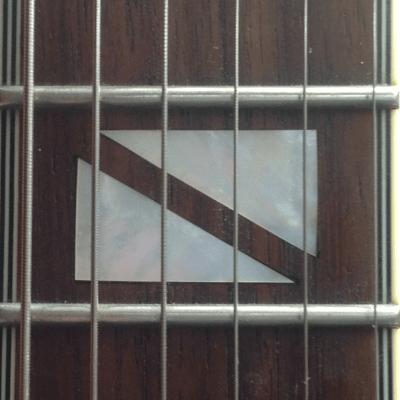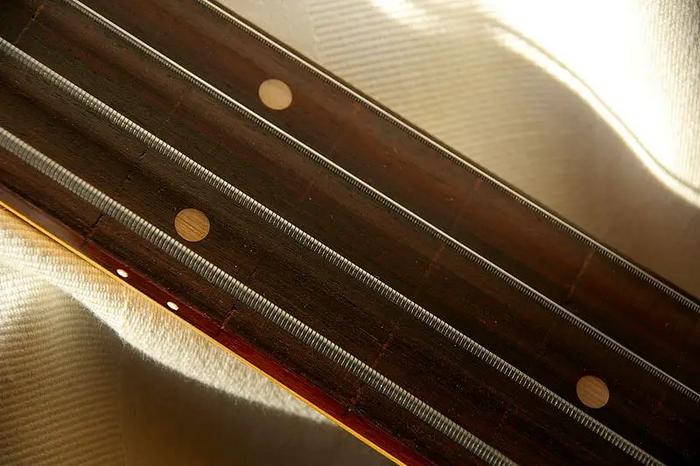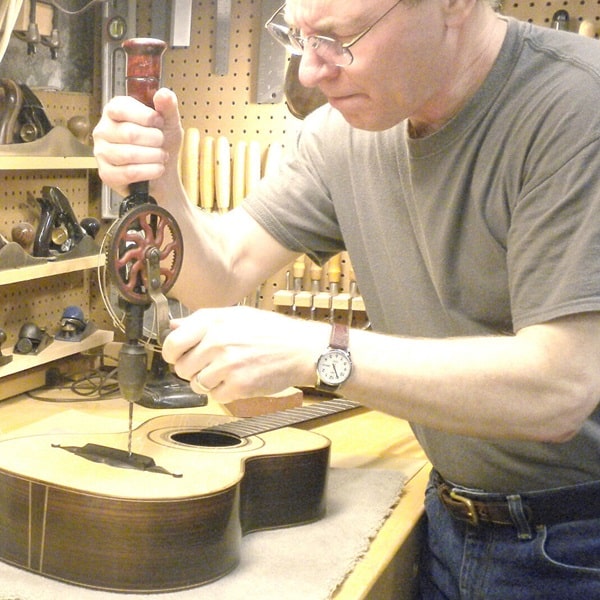As an experienced luthier, my engagement with electric guitar strings has been fascinatingly long and intimate. Yet, it was not until I had my first tryst with flatwound guitar strings that I truly fell in love with the subtleties of string construction. What was it about them that entirely shifted my perspective and practices? Well, the details of this transformative journey are stowed away in the upcoming sections.
During my research, I stumbled upon startling revelations about these strings which could potentially alter the guitar-playing atlas. However, before I unveil the full magnitude of my finding, we must familiarize ourselves with the nuances of flatwound guitar strings. I promise you, the journey is incredibly rewarding.
Flatwound guitar strings are fundamentally disarming in their simplicity, yet they hold the potential to revolutionize your relationship with your instrument. Striking as it may sound, I’ll let the forthcoming discussions unspool the truth behind this claim.
Join me, R.M. Mottola, as I offer you an in-depth exploration into the world of flatwound guitar strings, from comparisons and reviews to my personal recommendations.
What Are Flatwound Guitar Strings?

Given my extensive knowledge in the domain of guitar string materials, I have delved deep into the composition of various types of guitar strings. Of particular interest to me are flatwound guitar strings, a breed beloved by many musicians for its distinct features and effects on the guitar’s overall sound.
Ever wondered what makes up those shiny, smooth flatwound guitar strings? Let’s unravel the mystery! I believe in empowering every music enthusiast with the know-how and the intricacies of their instruments, just like these strings that are pivotal to your electric guitar’s performance.
Unlike the textured and ribbed roundwound strings, flatwound guitar strings consist of a round, hex, or square core that’s wrapped tightly with a flat metal ribbon like stainless steel or nickel. The wrapping process produces those distinctly flat, smooth surfaces which are the signature characteristic of flatwound guitar strings.
This flat surface not only offers a silky touch, but also delivers a warm, gentle tone that lacks the brightness and sustain you’d find in roundwound strings. In my experience, the tone unique to Flatwound strings greatly enhances genres like Jazz, Blues, and Classic Rock, imbuing them with a mellow and vintage resonance that truly speaks to the soul.
I promise to enhance your musical journey further with my deep analysis of Flatwound Vs. Roundwound strings in the coming chapter. So, stay tuned as we continue to unravel the wonders lurking in your guitar strings!
Flatwound Vs. Roundwound Strings
Pros and Cons of Flatwound Strings

Pivoting from the comparison between flatwound and roundwound strings, it’s vital to delve into the pros and cons of flatwound strings. Drawing from my extensive research in instrument acoustics, flatwound strings, due to their smooth surface, provide a silky feel that reduces finger noises, perfect for jazz and blues artists where subtlety is key. Their ability to produce warm, mellow tones is a distinct advantage, offering a unique sound palette for those seeking differentiation.
However, these strings have their challenges. Price-wise, they tend to be more expensive due to the production process. Their darker tonal quality, although preferred by some, may not ideally suiting heavier rock and metal genres which require brighter and punchier tones. Also, the lower magnetic output of flatwound strings can lower the guitar’s sustain. In the next section, we’ll delve into how to choose the best flatwound strings, bearing in mind these pros and cons to ensure your choice aligns with your musical demands.
Choosing the Best Flatwound Strings
D’Addario Chromes

Delving into the realm of the best flatwound strings, I can’t proceed without acknowledging the significant contribution of the D’Addario Chromes. Over my years as a stringed instruments expert, I have come across numerous brands, but D’Addario Chromes stands out. This well-regarded line of Jazz guitar strings significantly elevates the genre’s characteristic warm, mellow tone. It’s hard to beat the Chromes’ smooth feel combined with a rich, rounded sound that is pliable to a diverse range of Jazz nuances.
Thoughtfully engineered flatwound design, partnered with the use of stainless steel and a flattened ribbon wire, gives D’Addario Chromes a solid edge. It results in the impressive sustain, consistent performance, and reduced finger noise – features that are exceptionally valued in jazz and other music genres focusing on intricate melodic expressions. Playing with D’Addario Chromes, indeed, is akin to painting with a sophisticated musical palette.
Ernie Ball Slinky Cobalt Flatwound

Continuing our exploration into exceptional flatwound strings, we move on to the Ernie Ball Slinky Cobalt Flatwound. From experience, I can attest to their superior quality, exhibiting both a warm tone and a smooth feel under my fingers. For those who cherish a deep, rich sound and enhanced durability, these strings are a stellar choice. The cobalt used in the manufacturing process enhances their magnetic responsiveness, resulting in a more defined output while keeping finger noise to the bare minimum.
In my journey to select the best flatwound strings, the Slinky Cobalt Flatwound emerged as a definitive contender. Their smooth feel is arguably unmatched, and the warm tone they produce never ceases to impress. To put it simply, for seasoned guitarists seeking an exceptional playing experience, these strings offer a blend of consistency, sophistication, and style that lifts them a cut above the rest.
FAQs
What are Flatwound Guitar Strings?
What is the difference between Flatwound and Roundwound Guitar Strings?
Which are the top recommended Flatwound Guitar Strings?
Where can I read reviews on Flatwound Guitar Strings?
Conclusion
So, how will choosing the right guitar strings influence your music? Let’s recap! Electric Guitar Strings, particularly Flatwound guitar strings, provide a distinct tonal character that can significantly shape your sound. Its smoother surface reduces finger noise and prolongs your frets life, bringing in an unparalleled expressiveness to your music-making experience. I’ll say it as a seasoned luthier, grasping your gear deepens your expressivity as an artist. Choosing between Flatwound and Roundwound strings depends wholly on your musical needs and preferences.
From D’Addario Chromes to Ernie Ball Slinky Cobalt Flatwounds, the right strings can give you that edge you need. This guide aims to enrich your understanding and hopefully aids you in forging your distinct musical path.

R.M. Mottola, an engineer-turned-luthier, revolutionizes stringed instrument design with his deep focus on acoustics and ergonomics since 1994. As editor of the Savart Journal and a key contributor to American Lutherie, Mottola merges science with artistry in lutherie. He enriches the field with his extensive knowledge, shared through his Liutaio Mottola website, making him a beacon in the world of modern instrument craftsmanship.
